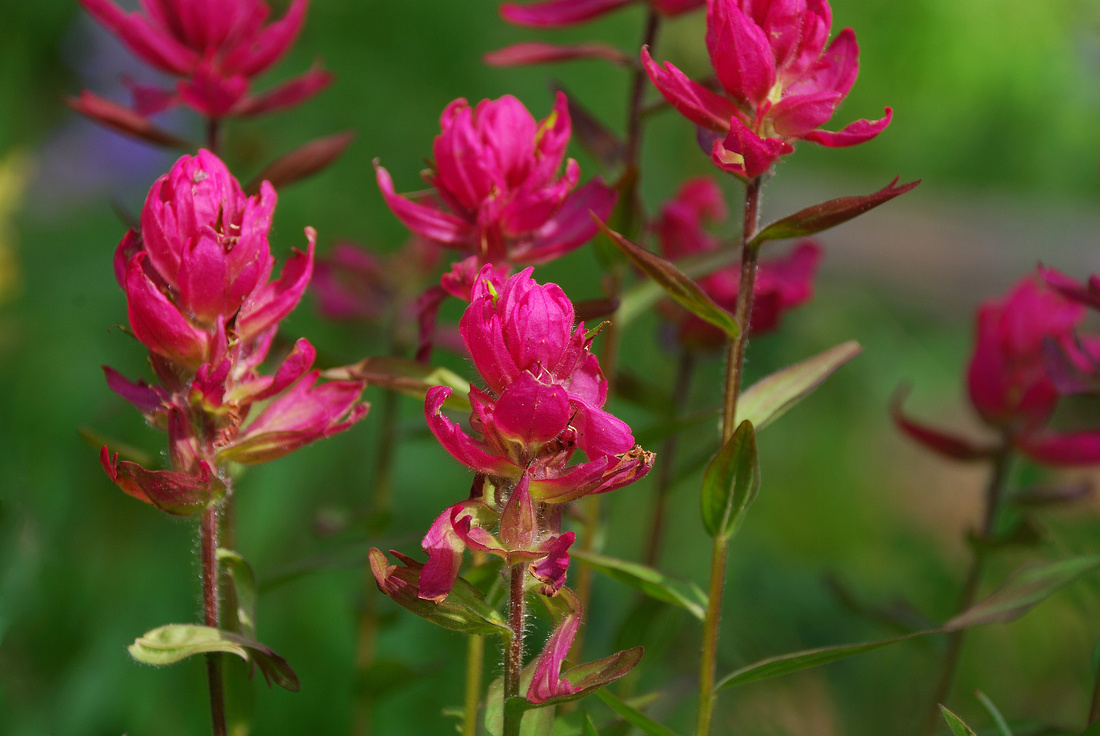Petals and sepals and bracts – oh my

 Everybody knows what petals are. They’re the pretty stuff that make flowers flowers. We learned that back in elementary school.
Everybody knows what petals are. They’re the pretty stuff that make flowers flowers. We learned that back in elementary school.
But, seriously, what is a petal?
What, for that matter, is a sepal? What’s a bract? What’s this tepal you sometimes run across in field guides? How do you tell one from another? (See my gallery here and don't assume everything you see here is sporting petals.)
Let’s start by acknowledging one obvious, but somehow startling, thing. Flowers are plants’ reproductive organs. So are cones, as it happens. The angiosperms – plants that bear flowers, seeds and fruits – differ from the cone-bearers (conifers, e.g.), aka gymnosperms. But flowers or cones, it’s all about the sex.
Before sex, plants handled the whole “let’s make a baby plant” business without contributions from something male and something female. Specialized leaves called sporophylls did all the work. They produced spores instead of seeds.
“A spore is a reproductive cell that is capable of growing into a new organism or structure without uniting with another cell.”(1)
After sex – that is, after sexual reproduction evolved – making the next generation of plants took more steps and, well, more equipment, like flowers and cones. Those sometime specialized leaves evolved into petals, sepals and bracts.
Interestingly, the spore-making structures called sporangia(2) and the spores are still there. But now the spores develop into pollen in the anthers, located on the ends of the stamens (the male constituents of the flower). This is what I love about evolution. It builds new stuff from existing stuff.
Flower parts grow in whorls (i.e., rings) around the flower base – the receptacle.(3) Botanists think of sepals and petals as two of a flower’s four basic organs.
Sepals grow on the outermost whorl. They’re often green and “protect the developing reproductive structures inside the bud before the flower blooms.”(4) Think Poppies. That green fuzzy jacket around the bud before it “pops” is made up of sepals.
Next come the petals whose main role, of course, is attracting and even providing a “landing platform” for pollinators.(5) Besides advertising the flower with color and shape, petals can up the ante with “perfume and nectar glands.”(6)
But sepals can easily be petal-like in color and showiness. See Columbines. See Monkshood. They, too, can attract pollinators. Some plants dispense with petals altogether – for instance, Globeflower (Trollius laxus), Marsh Marigold (Caltha leptosepala) and Anemone (Anemone multifida globose, Anemone parviflora).
Bracts also are modified specialized leaves. Generally they’re there to protect. But sometimes they take over the role of attracting pollinators.(1,7) They can even “act as hoods or guides that can guide pollinators to a flower.”(8) The colorful, showy part of the Paintbrushes (Castilleja), for instance, are bracts. Paintbrush’s corolla (made up of fused petals) is tubular, inconspicuous and often yellowish.
“When sepals and petals are both pigmented and indistinguishable from each other, they’re called tepals.”(9) See, for instance, the garden variety Tulip or the wild Wood Lily (Lilium philadelphicum).
Petals and sepals and bracts – and, oh yes, tepals – are more than just “pretty stuff.” They have a story to tell that’s as old as evolution.
NOTES
1 “Botany for Dummies” by Rene Fester Kratz, PhD., page 81.
2 Ibid., page 87.
3 Ibid.
4 Encyclopedia of Life Sciences, http://www.els.net/WileyCDA/ElsArticle/refId-a0002064.html
5 “Handbook of Plant Science,” Keith Roberts ed., 2007.
6 http://www.ext.colostate.edu/mg/gardennotes/135.html#function
7 https://en.wikipedia.org/wiki/Bract
8 http://dept.ca.uky.edu/PLS220/Flowerbracts.pdf’
9 http://www.uky.edu/Ag/Horticulture/Geneve/teaching/PLS%20220/Flowers/Flower%20parts.pdf